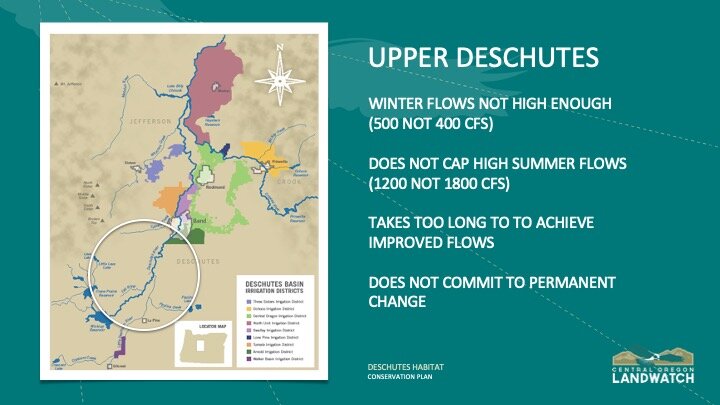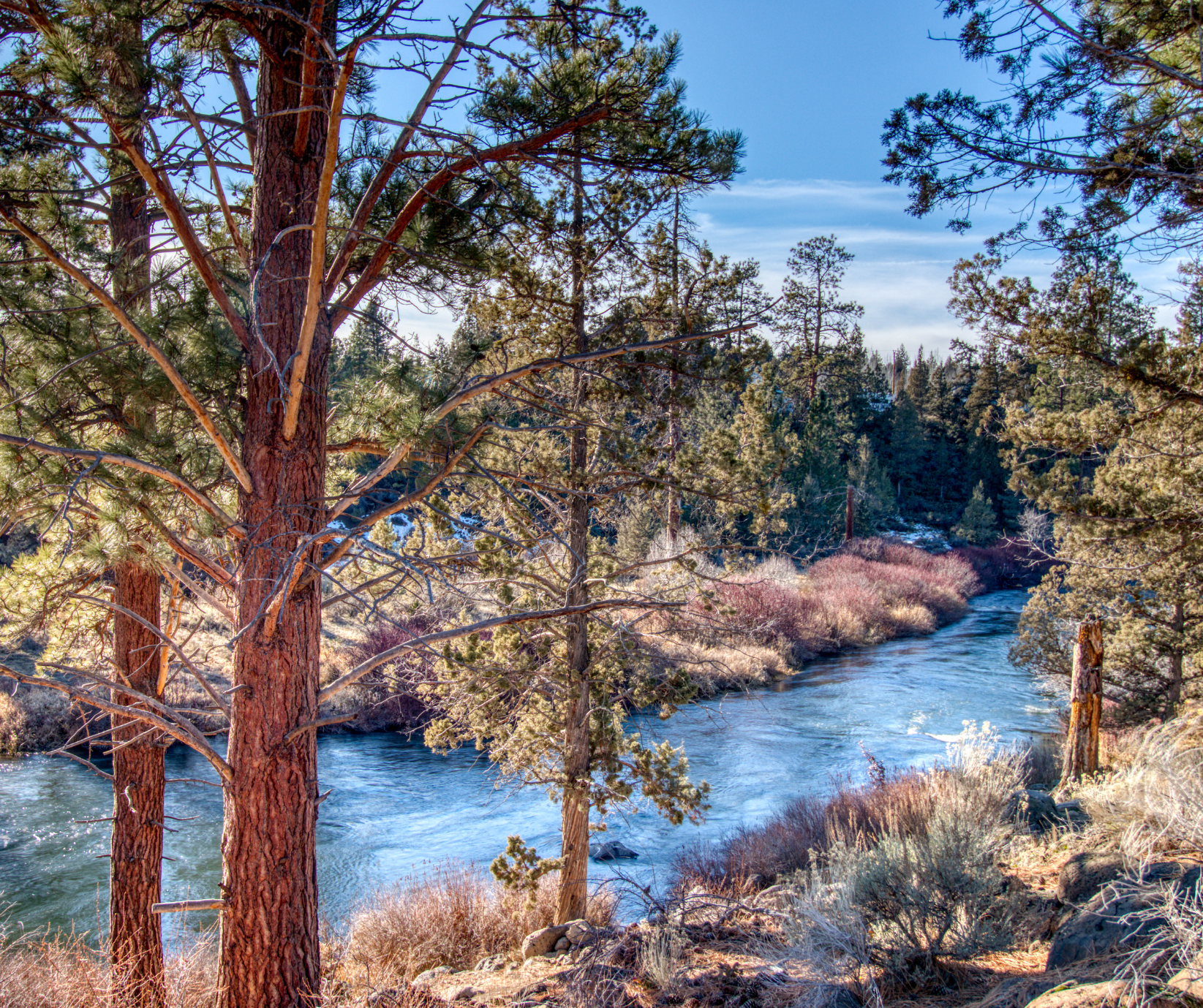
Restoring the Deschutes River
Our river needs help.
The Deschutes River is a national treasure. Designated as both a National Wild and Scenic River and a State Scenic Waterway, the Deschutes is the largest spring-fed river in the United States. It has also long been known as the “Peculiar River” for its remarkably even year-round streamflow, more than any other river in the US.
Unfortunately, due to chronic mismanagement of our water resources, the Upper Deschutes has suffered significant ecological decline over the past century. The once stable flow is now highly volatile. It varies from low flows of 100 cubic feet per second (cfs) in the winter when water is being stored in Wickiup Reservoir to flood-level flows as high as 1,800 cfs in the summer when the stored water is released and transported to Bend where it is diverted for irrigation.
What is the HABITAT CONSERVATION PLAN?
The Habitat Conservation Plan (HCP) is an enforceable agreement between irrigation districts and federal agencies meant to reduce the harmful effects of irrigation, but the plan currently put forth is woefully inadequate to address the health of the River, and the welfare of its fish and wildlife. The problem is that the streamflow levels are set too low and the process will be phased in over too long of a period.
If this plan goes into effect, it is in place for 30 years.
The chronic mismanagement of water resources in our basin has had profound consequences for commercial farmers, our native fish and wildlife, and vegetation critical to streambanks.
“It is time to speak out against water waste, to encourage water conservation, and to use the HCP federal permitting process to set appropriate streamflow goals for our rivers.”
WHAT’S HAPPENING TO OUR RIVER?
A TRAGEDY FOR FARMERS AND RANCHERS
Not all irrigation districts are the same. Of the two largest irrigation districts, the North Unit Irrigation District (NUID) in the Madras area is comprised primarily of family farmers who engage in a thriving and sophisticated farm economy (including, for example, selling carrot seed to Japan and Holland) and who use water efficiently (including, for examples, sprinkler and drip irrigation). NUID is a junior water rights holder, though, so it is the last to get water under current water law.
In contrast, the Central Oregon Irrigation District (COID) is a senior water rights holder and is managed in a way that flagrantly wastes water. For many of the COID water users, the water is merely a real estate amenity or, at best, used for a hobby farm. Wasteful flood irrigation is practiced in many places. The COID advocates use over conservation. That is not to say that all COID patrons want to waste water. Actually, a growing number of them have made it clear that they would like to lease their water to the River and NUID farmers, but COID is currently preventing that.
DESTRUCTION OF FISH AND FROG HABITAT
Historically, the River supported one of the most productive cold-water fisheries in the country. The Deschutes tributaries like the Crooked River, Tumalo Creek and Whychus Creek also support important fisheries.
Every November, water managers “turn off” the river at the Wickiup Dam to store water for the following year’s irrigation season. The dewatering of the Upper Deschutes on an annual basis has created lethal conditions in the river for fish and other aquatic life. Bull Trout no longer swim in these waters and the native Redband Trout and Oregon Spotted Frog populations are in severe decline.
EROSION TO BANKS AND VEGETATION
The river is treated like an irrigation ditch. The low flows dry the banks and weaken the riparian vegetation; the subsequent high flows uproot and wash away the vegetation critical to anchoring the fine volcanic soils of the streambanks, resulting in severe erosion and a river channel that is 20% larger than it was in its natural state.
WE CAN DO BETTER.
It is time to stop the wasteful business-as-usual practices that generate these tragic outcomes. There is too much at stake for our rivers, farmers, and communities. We advocate for sensible, incentive-based strategies that can work today.
Fish and family farms should be beneficiaries, not casualties.
WHAT HAPPENS NEXT?
In 2019, we asked Central Oregon residents to voice their support of an improved plan for the Deschutes River and over 1,700 public comments were submitted to the U.S. Fish & Wildlife.
That is a staggering number and a true testament to the importance of our high desert river system. We are working hard to make sure that this outcry from the public will not go unheard.
We have continued to advocate with federal agencies and irrigation districts to improve the HCP as they developed the final draft. The final draft Habitat Conservation Plan and final draft Environmental Impact Statement were published earlier this year, followed by the agencies’ record of decision and biological opinion.
Read below for our continued updates regarding the fight for the restoration of the Deschutes.
Banner photo by Arian Stevens













